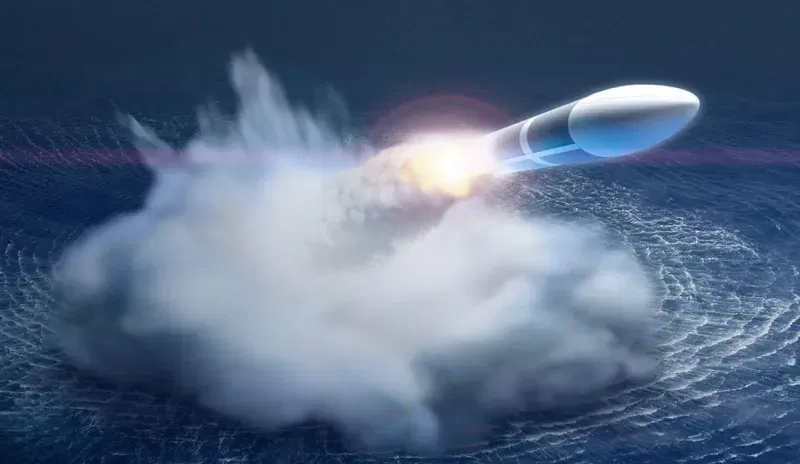
Began as a trilateral submarine development campaign, AUKUS is now evolving into high-tech sub categories to include hypersonic weapons testing by 2028.
Began as a trilateral submarine development campaign, AUKUS is now evolving into high-tech sub categories to include hypersonic weapons testing by 2028.

By Kris Osborn, President, Warrior
High temperature materials built to withstand hypersonic flight, advanced propulsion systems and new generations of guidance, targeting and flight trajectory control technology are all critical elements of a multi-national US- Australia-UK (AUKUS) development deal to build sub-surface launched hypersonic weapons for submarines.
Began as a trilateral submarine development campaign, AUKUS is now evolving into high-tech sub categories to include hypersonic weapons testing by 2028.
"We are increasing our collective ability to develop and deliver offensive and defensive hypersonic technologies through a robust series of trilateral tests and experiments that will accelerate the development of hypersonic concepts and critical enabling technologies," Heidi Shyu, Under Secretary of Defense for Research and Engineering, said in a Pentagon statement.
The agreement between the countries, according to the Pentagon, is called the Hypersonic Flight Test and Experimentation Project Arrangement, an deal which will enable the three countries to share data, technical information and testing facilities for hypersonic weapons.
The AUKUS hypersonic testing timeline makes sense as the US Navy is concurrently working to fire hypersonic weapons from its Virginia Class attack submarines by 2028 as well, so it would not be surprising if additional collaborative efforts are underway. The US Navy is already developing hypersonic weapons to launch from its Zumwalt-class destroyers, and the service plans to adapt the technology for undersea launch from submarines.
Submarine-Launched Hypersonics will clearly bring unprecedented advantages, a principle element of which is simply “speed” of travel. A weapon traveling at five times the speed of sound is much more difficult to defend against and it will of course reach its target exponentially faster than standard submarine-fired weapons such as Tomahawk cruise missiles. Tomahawks can travel up to 550mph for distances greater than 900 miles, so any extended travel time needed to approach a target from hundreds of miles away would make a Tomahawk much more susceptible to being tracked, jammed or intercepted while en route to a target. A hypersonic projectile, by contrast, would be nearly impossible to track and target, something which complicates any adversary countermeasures or effort to defend against it.
Undersea hypersonic weapons bring yet another tactical advantage, as they can operate in a more stealthy capacity compared to ship, air or ground launched hypersonics. A warship or aircraft, and certainly a ground-launch location, would be easily findable for enemy sensors, satellites and other detection technologies. A hypersonic attack from a submarine, by contrast, would be much more likely to attack from an unknown, unseen or undetected location, something which adds an element of stealth. A submarine could, therefore, launch a surprise hypersonic missile attack from closer-in, hidden locations.
“To prepare for the underwater use of the CPS launcher, we are also building an Underwater Test Facility at NSWC Crane, Indiana. This facility will conduct submerged tests to ensure we understand how the missile flies through the water to support fielding CPS capability from Virginia Payload Module equipped Block V VIRGINIA Class submarines,” Vice Admiral Johnny Wolfe, USN Director, Strategic Systems Programs. told lawmakers in testimony last year before the Tactical Air and Land Forces Subcommittee, House Armed Services Committee.
Kris Osborn is the President of Warrior Maven – Center for Military Modernization and Osborn previously served at the Pentagon as a Highly Qualified Expert with the Office of the Assistant Secretary of the Army—Acquisition, Logistics & Technology. Osborn has also worked as an anchor and on-air military specialist at national TV networks. He has appeared as a guest military expert on Fox News, MSNBC, The Military Channel, and The History Channel. He also has a Masters Degree in Comparative Literature from Columbia University.
